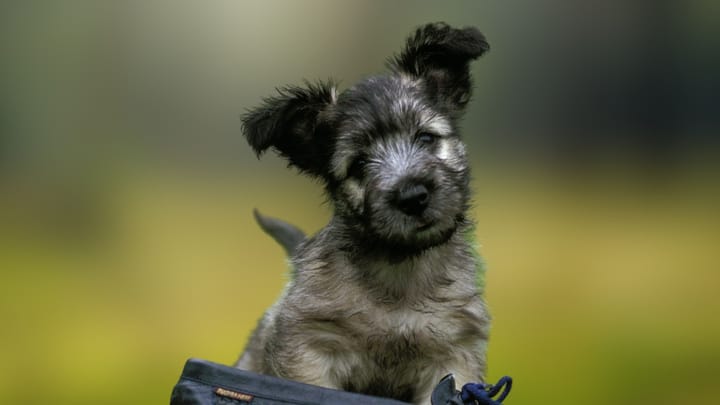Skye Terrier


The Skye Terrier is a bold, lively, intelligent and stylish (just look at that coat!) Scottish breed of dog. This fancy little canine was bred to hunt vermin and, therefore, still holds a significant prey drive to this day, which can be problematic. While this fearless breed can certainly make for a loyal and affectionate companion once trained, it’s best matched with a confident owner who knows how to work with an independent Terrier breed.
|
Life expectancy |
The Skye Terrier has a life expectancy of between 10 and 12 years |
|
Temperament |
|
|
Size |
Medium
|
|
Adult size |
Female
Between 10 and 10 in
Male
Between 10 and 10 in
|
|
Adult weight |
Female
Between 22 and 26 lb
Male
Between 22 and 26 lb
|
|
Coat colour
Black, blue, gray, silver, fawn or cream - often multiple shades of the same colour. |
Black Blue Red Sand |
|
Type of coat
Long, double, with a hard overcoat and soft, silky undercoat. |
Long Hard |
|
Eye colour
Light or dark brown. |
Brown
|
There was once a Skye Terrier called Greyfriars Bobby, who is famous for his incredible loyalty. After his owner died, he guarded the grave day-in-day-out for 14 long years, until he also grew old and died. Now, they’re peacefully buried next to each other - adorable!
More details about the Skye Terrier
Skye Terrier: Origins and history
The Skye Terrier originates from the Isle of Skye in Scotland, and is now one of the rarest breeds of Terrier in the world. The breed is believed to date back to the 16th century, when it was loved by royals, including Queen Victoria, for its lavish, luxurious coat and ability to catch vermin. Sadly, it’s widely believed that the Skye Terrier will face extinction in the next few decades, unless a renowned effort is made to revive the breed.
Physical characteristics of the Skye Terrier
The Skye Terrier is a small dog with short legs, whose body length is roughly double its height. Despite being a small dog, it’s well-built and sturdy. The tail is long and beautifully feathered. The head is long with a tapered muzzle and a subtle stop. The eyes are small and dark, the ears are pointy, feathered and erect, while the nose is black. The beautiful, long, silky coat is this breed’s defining future.
FCI classification of the Skye Terrier
-
Group 3 - Terriers
-
Section 2 : Small sized Terriers
Skye Terrier: Characteristics
Skye Terrier: Behaviour
Training a Skye Terrier
The Skye Terrier is capable of becoming an obedient, well-behaved dog - though it will take lots of consistency and patience! This breed will try to test its owners and needs to be trained with confidence from the get-go. Aim for fun, short training sessions with plenty of food rewards and positive reinforcement. While it’s important to be firm with the Skye, always remain fair and never scold.
Skye Terrier: Lifestyle
Breed compatibility Skye Terrier
Skye Terrier: Purchase price
We do not have enough data to set an average price, but you can expect to pay upwards of £500 for a well-bred dog. Looking after a dog of this size typically costs between £50 to £80 a month, including food, medical/insurance, and incidental expenses.
Skye Terrier: Shedding
Average
The Skye Terrier is a low to moderate shedder.
Skye Terrier: Grooming
At first glance, most people assume that the Skye Terrier must be high-maintenance in the grooming department. In fact, the long coat simply needs brushing around 2-3 times per week, in order to prevent matts and tangles. It’s best to lightly spray the coat with water to avoid breakage.
Skye Terrier: Health
A generally healthy and robust breed, which is unfortunately prone to cancer. The average life expectancy is 11 years.
Sturdy and well-built for its size.
The Skye generally copes well with hot weather, but would prefer to sit in the shade or swim to keep cool. It may struggle with extremes of heat, so always provide cold water.
Thanks to its thick coat, the Skye Terrier tolerates cold and wet weather very well. However, it’s not an outdoor dog.
This breed might be greedy, so it’s essential to measure out food portions daily and ensure it receives adequate exercise.
- Breast cancer
- Spleen cancer
- Autoimmune disease
- Intervertebral disk disease
- Hip & elbow dysplasia
- Luxating patella
- Allergies
- Digestive issues
- Herniated disc





